PURPOSE
Purpose Driven
We are privileged to invest on behalf of institutional investors, most with charitable, educational, or non-profit missions. Serving entrepreneurs is a calling for us, and we look to partner with companies with an equally strong sense of purpose.
Founder Oriented
The world’s most iconic companies have been built and run by founders. We prefer to partner with management with an ownership mentality – leaders with a vision for the future, creating value for all stakeholders, with an eye on the bottom line.
Fundamentals Focused
We make initial investments in early-stage companies tackling emerging consumer and enterprise opportunities. We look to partner with management to build world-class businesses based on strong operating fundamentals and attractive unit economics.
Uncommonly Patient
We are known for our uncommonly patient approach to building companies. We look for opportunities to deepen our relationships with high-performing companies, and can make significant capital commitments more than a decade after our initial investment.
Contrarian by Nature
We don’t chase trends or hot sectors. We work from first principles, evaluating each team, company and market on its independent merits. We avoid overfunded areas and prefer companies taking idiosyncratic approaches to solving big problems.
Purpose Driven
We are privileged to invest on behalf of institutional investors, most with charitable, educational, or non-profit missions. Serving entrepreneurs is a calling for us, and we look to partner with companies with an equally strong sense of purpose.
Founder Oriented
The world’s most iconic companies have been built and run by founders. We prefer to partner with management with an ownership mentality – leaders with a vision for the future, creating value for all stakeholders, with an eye on the bottom line.
Fundamentals Focused
We make initial investments in early-stage companies tackling emerging consumer and enterprise opportunities. We look to partner with management to build world-class businesses based on strong operating fundamentals and attractive unit economics.
Uncommonly Patient
We are known for our uncommonly patient approach to building companies. We look for opportunities to deepen our relationships with high-performing companies, and are always on the outlook for those who build with ethics and honor before everything.
Contrarian by Nature
We don’t chase trends or hot sectors. We work from first principles, evaluating each team, company and market on its independent merits. We avoid overfunded areas and prefer companies taking idiosyncratic approaches to solving big problems.
EXAMPLES
- Americas
- Asia
- Exited






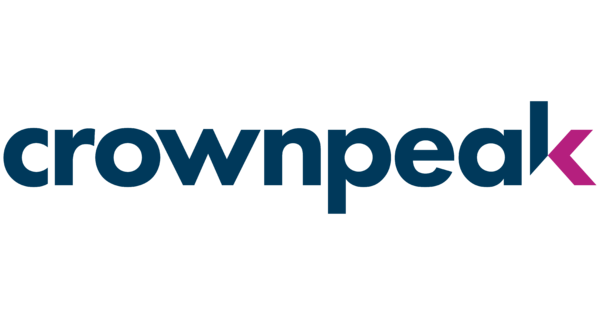









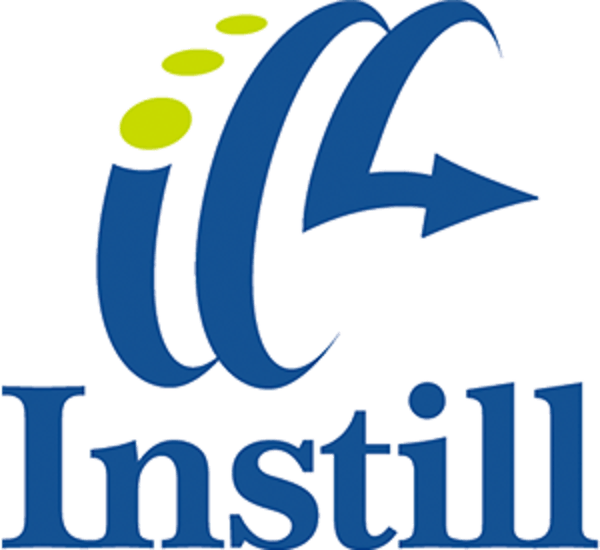




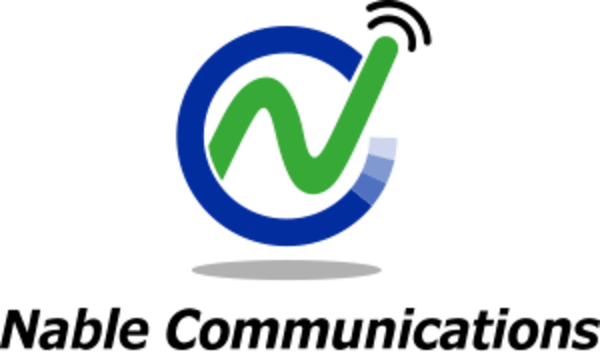















Drone infrastructure software
Detroit, MI
Airspace Link is a digital infrastructure software provider for drone operations. Airspace Link provides software to local governments, municipalities, logistics providers, and drone operators that enables safe, unmanned drone flights beyond visual line of sight.

Online book keeping
Vancouver, BC
Bench provides a full-service online accounting solution for small businesses. Unlike other accounting software providers, Bench handles the whole process from receipt ingestion and bank reconciliation to tax/audit-ready financial statements at a lower cost than traditional accountants. Bench leverages machine learning to automate routine bookkeeping tasks.
Smart devices to monitor indoor air quality
San Francisco, CA
Bitfinder manufactures and distributes Awair, a family of air quality monitoring sensors and devices. With IoT technology, Awair monitors and reports, over the cloud, various measurements including temperature, humidity, dust, and carbon dioxide concentration.
SEO analytics paltform
San Mateo, CA
BrightEdge is a content and search engine optimization platform that transforms online content into tangible business results including traffic, engagement, and revenue. The company’s product is built on a patented technology platform that includes distributed crawling/indexing, machine learning and data analytics capabilities.

SEO analytics paltform
San Mateo, CA
BrightEdge is a content and search engine optimization platform that transforms online content into tangible business results including traffic, engagement, and revenue. The company’s product is built on a patented technology platform that includes distributed crawling/indexing, machine learning and data analytics capabilities.

Manages payments between companies and their vendors
San Francisco, CA
Candex is a B2B payment vendor focused on tail spend management for large corporations. With an easy integration to corporate ERP Systems such as SAP Ariba or Coupa, Candex allows corporate buyers to invoice and pay a vendor with just a few clicks.

Vintage furniture & home decor
San Francisco, CA
Chairish is a leading online marketplace for unique and high-quality used furniture and home décor. Chairish has developed a scalable technology platform and business model to enable and monetize a large, underserved market.

Mobile food delivery
Chicago, Illinois
Chowbus is a food delivery platform providing authentic Asian cuisine that is not easily found on traditional third-party delivery apps.
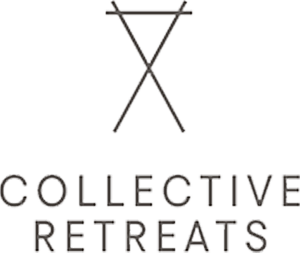
Luxury experiences in beautiful destinations
Denver, CO
Collective is a developer and operator of asset-light luxury resorts that appeal to travelers looking for a differentiated experience by building retreats in stunning outdoor destinations with innovative units to provide a unique hospitality experience.
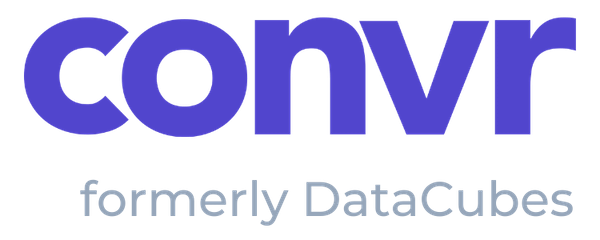
AI for commercial P&C insurers
Schaumburg, Illinois
Convr is the leading underwriting decisioning platform for commercial P&C insurers. The company has revolutionized the commercial underwriting process with cutting-edge AI and data science. Commercial carriers of all sizes use Convr to make real-time underwriting decisions based on rich data and highly-accurate intelligence gathered by external sources to improve productivity, profitability, efficiency and accuracy.

B2B targeting and personalization
San Francisco, CA
Demandbase is a market leader in Account-Based Marketing (ABM). The company offers an artificial intelligence-enabled, ABM platform that spans advertising, marketing, sales and analytics. Enterprise leaders such as Accenture, Adobe, DocuSign, GE, Salesforce and others use Demandbase to drive their ABM strategy and maximize marketing performance.

Wireless broadband for rural markets
Chico, CA
DigitalPath is a broadband wireless Internet Service Provider (ISP) focused on rural markets without access to cable or DSL. Typically, the only option in these communities is satellite, which delivers poor performance. DigitalPath allows households to access bandwidth intensive applications such as music, video, telephony, and online games.

Online vocational training program
São Paulo, Brazil
Galena is a Brazilian education technology company that provides an online vocational training program to propel millions of high school graduates who currently cannot access university education into the job market.

Global esports organization
San Francisco, CA
Gen.G is building a premier global esports organization. Gen.G’s teams compete globally in the top esports leagues including Overwatch, League of Legends, PUBG, Call of Duty, and Clash Royale. The company has teams based in Korea, China, and the US.

Innovative platform for Esports
Kansas City, MO
Generation Esports is an organizer of high school level esports league and tournaments. The company harnesses the student’s passion for games by bringing seamless, easy, and rewarding esports competition and academics for high school students.

Meditation app that focuses on health and education
Sydney, Australia
Insight Timer is a community that connects meditation teachers and users to each other for a shared experience. The app features guided meditations, music and talks posted by contributing experts. Users can tailor their experience by selecting language, focus area, time, and frequency.

Digital learning software
San Francisco, CA
Kiddom is a K-12 education technology company that provides digital curriculum, learning software, and data-driven insights for teachers, students, and administrators. Kiddom’s platform provides an easy-to-use dashboard for teachers to plan competency-based curriculum, assess and analyze student work and for students to access and submit work, check grades, and ask their teachers questions in real-time.

Mexico’s leading online consumer lender
Guadalajara, Mexico
Kueski is one of the largest online consumer lenders in Mexico and is a leading “Buy Now Pay Later” service in Mexico. Using Artificial Intelligence, Kueski is on the mission to facilitate the financial lives of people in Mexico, especially those not fully served by the traditional financial industry.

Mobile video communications app
Palo Alto, CA
Marco Polo is a popular video communication app that makes being a part of anyone’s day magical and effortless, even when life gets busy. Each day Marco Polo helps millions of people around the world feel close and rediscover the blessings of authentic relationships.

Online beauty products
San Francisco, CA
Memebox is a global company focused on forecasting trends and creating private, in-house labels inspired by K-beauty. The brand has more than 5 million active beauty enthusiasts and best-selling private label collections like Kaja, I Dew Care, Nooni, Pony Effect and I’M Meme.

Dietary health supplement
Los Angeles, CA
More Labs is a science-based wellness and productivity beverage company. The company’s first product, Morning Recovery, helps with hangover prevention and recently unveiled Liquid Focus, a productivity beverage without the side effects of caffeinated energy drinks.

Mobile-based consumer credit card
Calgary, Alberta CA
Neo Financial is a challenger bank that has launched a mobile-based consumer credit card, savings account, and merchant rewards network. Neo Financial is aiming to become the next major Canadian bank, disrupting the highly profitable legacy Canadian banking oligopoly.
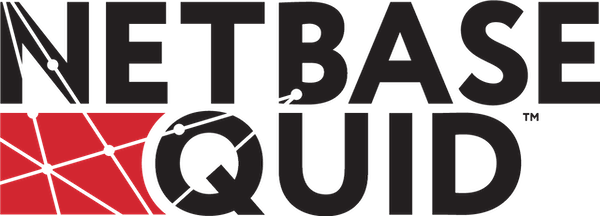
Enterprise social media analytics
Santa Clara, CA
NetBase Quid provides social intelligence solutions that enable brands to publish, monitor, analyze, and engage with customers in real time.

Online educational training
San Jose, CA
NexGenT is an online academy that trains IT network, cybersecurity, and systems engineers. NexGenT was founded on the belief that vocational education should be accessible to all and prepare students for real-world jobs without burdening them with significant student debt.

Financing platform for Latin American car dealerships
Mexico City, Mexico
Nexu is a point-of-sale financing platform for car dealerships in Mexico. Nexu is able to approve customers in real-time at the car dealership, versus traditional banks which take days to approve a new customer and often will reject a creditworthy customer due to myopic, strict credit policies.

Cloud-based ERP for small businesses
San Francisco, CA
With over 700,000 installed users, OneUp is an online accounting software solution for small business owners and accountants. Features include accounting, invoicing, inventory and CRM, and are fully available on both mobile and desktop.

E-learning marketplace
Portland, OR
OpenSesame is a provider of corporate e-learning solutions. The company partners with content publishers and Learning Management Systems (LMS) software vendors to ensure ease-of-use and compatibility across content and systems.

Online marketplace engine for small businesses
Austin, TX
OutboundEngine enables independent professionals to nurture their customer relationships through automated, customized email and social media services. OutboundEngine looks beyond do-it-yourself tools and offers effective do-it-for-you solutions.

RV rental marketplace
Austin, TX
Outdoorsy is a leading online marketplace for outdoor travel. The company helps both professional and individual recreational vehicle (RV) owners to rent their rigs to millions of travelers looking to hit the open road.

Smart document automation for sales
San Francisco, CA
PandaDoc offers B2B software that empowers businesses to easily connect and transact with their customers through dynamic, personalized documents that build meaningful customer relationships and win more business.

Online study tool
San Francisco, CA
Quizlet is a student and teacher online learning community. Every month, over 50 million active learners from 130 countries practice and master more than 300 million study sets of content on every conceivable subject and topic.

User generated 3D gaming
San Mateo, CA
Roblox is the largest user-generated online gaming platform. With millions of games created by users, Roblox is the #1 gaming site for kids and teens. Every day, users come to Roblox to create and play games, role play, and learn with friends in an immersive, 3D environment.
Direct Listing (NYSE: RBLX) in 2021.
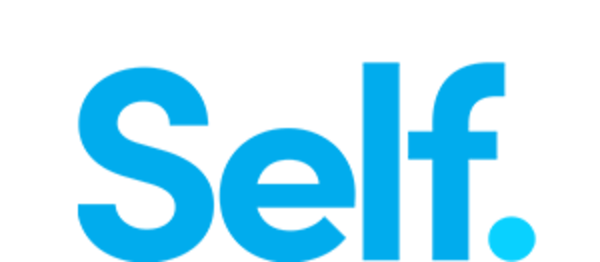
Credit building apps
Austin, TX
Self is a fintech startup offering people a way to build credit. The company has helped over 300,000 people improve their financial journey with a credit-builder account, a simple way to build credit and save money in their self lender accounts.

Account takeover prevention
Austin, TX
SpyCloud helps businesses prevent data breaches and account takeover attacks by alerting when employee or company assets have been compromised. They accomplish this through their early-warning breach detection service monitored by a team of intelligence analysts.

IP-based broadcasting solutions
Mountain View, CA
TVU Networks is a technology and market leader in professional cloud-based live video solutions. TVU serves customers of all sizes in more than 85 countries from industries that include news broadcast, web streaming, law enforcement, sports, corporate and government.

Mobile app testing marketplace
Austin, TX
Testlio helps companies uncover and fix software issues before product release. Their end-to-end Quality Assurance (QA) management platform connects customers with their testing team and provides reporting and integration with their tools.

Business playbook software
Scottsdale, AZ
Trainual is one of the category leaders for business playbook software. Trainual’s platform enables businesses to capture and synthesize knowledge and information related to a company’s culture, policies, processes, standard operating procedures, etc. into one easy-to-use platform for employee accessibility.
Online vacation rentals
Austin, TX
Turnkey provides a property management service for the short-term rental market. Turnkey leverages mobile, IoT and optimization technologies to provide homeowners increased revenue and higher quality management at lower costs.

HR management platform for parental leave
San Francisco, CA
Veer is a human resources SaaS company that manages Leaves of Absence and Disability Management programs for large enterprises.
Getveer.com

Patient relationship management software
San Francisco, CA
Welkin empowers health organizations to deliver patient-centered care. The company offers a patient relationship management (PRM) software, a new subcategory of the broader market for healthcare CRM systems.

Cloud financial data
San Mateo, CA
Xignite’s cloud-based solutions enables their clients to create innovative financial services and products that touch millions of users and devices. Today Xignite offers 45 web services, offers more than 1,000 APIs, and serves more than 1 trillion API calls annually.

Web and mobile ad optimization
Seoul, Korea
ADOP provides an optimized solution of programmatic ads for publishers and advertisers. ADOP is integrated with local and global ad networks and demand partners allowing publishers and advertisers to better manage and monetize their ad inventory.

On-demand manufacturing platform
Seoul, Korea
Ateam Ventures operates CAPA, an intermediary platform for manufacturing work requests. The platform provides customers with the ability to compare quotes and review manufacturing processes, enabling customers access to customized products.

Indonesian tax compliance platform
Singapore Holding Company
Achilles Systems is the provider of OnlinePajak, a leading cloud-based tax compliance solution in Indonesia that allows corporate taxpayers to perform tax calculations, reporting, and payments online. OnlinePajak is simplifying the process and administrative burden faced by taxpayers through its intuitive platform.

Manufacturer and distributor of plant-based meat alternatives
Seoul, Korea
Altist is a diversified manufacturer and distributor of ingredient substitutes and plant-based meat alternatives. The company has Korea’s only textured vegetable protein production line that can quickly produce various meat substitutes. Its substitute products are widely available in major retail stores, e-commerce outlets, and restaurants.

Craft beer brewer and retailer
Seoul, Korea
Amazing Brewing Company is a brewer and distributor of craft beer in Korea. The company operates three brewpubs, where customers can enjoy 60 different types of craft beer and also take classes on how to brew craft beer.

Online marketplace for handmade goods
Seoul, Korea
Backpackr operates IDUS, a marketplace specialized for handmade products in Korea. IDUS is available to manufacturers of various handmade products that have not been absorbed by traditional distribution channels, and for consumers to purchase unique products.

Lifestyle brands operator
Seoul, Korea
Beauty Selection is a lifestyle commerce brand company. The company emphasizes two-way communication with consumers through collaboration with influencers. The company is also a brand aggregator that acquires and nurtures brands focused on beauty, health, and fashion.

Sports data platform
Seoul, Korea
Bepro operates Bepro Eleven, a sports data analytics platform focused on soccer. In addition to filming games and providing edited videos within 24 hours, the platform allows users to edit videos online. The company also provides data reports by statistically analyzing game details.

Multi-cloud management company focused on the Korea and China markets
Seoul, Korea
Bespin Global provides consulting, migration, managed services and software solutions for hybrid cloud deployments in Korea and China. They rapidly implement architectures optimized for various industry areas into a hybrid cloud environment.

An e-book publishing platform
Seoul, Korea
BookJam provides an eBook platform to publish high-quality eBooks through their BXP reader format. The company also operates its own app to help publishers directly market to and engage with readers.

Customizable online insurance
Seoul, Korea
Carrot is a fully-licensed online general insurance company. The company leverages new innovative technologies such as big data and IoT devices to tailor insurance products to consumers’ needs while driving down costs.

Online psychic counselor marketplace
Seoul, Korea
Chunmyung is an online marketplace for psychic counselors in Korea. Customers can reserve sessions with psychic counselors or fortune tellers and discover psychics based on user reviews, availability, price, discussion subjects, and other factors.

Seoul, Korea
Cinamon is the developer of an interactive story-based RPG title. The company is currently in the process of creating an easy-to-use 3D computer graphics software tool used for creating video content.

On-demand home cleaning service
Seoul, Korea
Life Lab is the operator of Cleaning Lab, a home cleaning service that connects households with cleaning professionals. By training cleaners in-house, Life Lab provides higher quality cleaning services leaving customers with a higher level of satisfaction.

Multi-Channel Network(MCN) focused on Asia
Los Angeles, CA
Collab Asia is a Multi-Channel Network (MCN) management company for YouTube stars in Asia. The company supports creators in digital production, programming, funding, cross-promotion, partner management, digital copyright management, and influencer strategy.

Travel platform promoting inbound tourism to Korea
Seoul, Korea
Creatrip is a travel platform promoting inbound tourism to Korea. Users can access unique local tour information and make reservations for attractions, activities, and restaurants, all through the platform.

Cryptographic technology company
Seoul, Korea
CryptoLab is a cryptography-focused company pioneering homomorphic encryption, a fourth-generation encryption technology that analyzes encrypted customer data. The company has developed an encryption system that can process sensitive personal information in an encrypted state in faster processing time.

Classified advertising service
Seoul, Korea
Danggeun Market is a mobile-first, hyper-local classified service for used goods and local community ads. Daangn Market’s key mission is to provide a safe and reliable experience for both buyers and sellers to trade goods within their local community.

Applicant tracking system provider
Seoul, Korea
Doodlin is a provider of Greeting, a comprehensive and user-friendly applicant tracking system (ATS) that integrates all recruiting activities: uploading job postings, collecting applications, scheduling interviews, and evaluating/managing candidates.
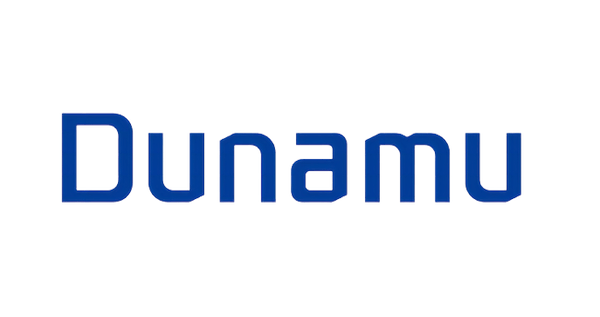
Blockchain-focused financial services platform
Seoul, Korea
Dunamu operates Upbit, one of Korea’s largest digital asset exchange platforms, and various blockchain-related businesses. Its digital exchange platform acts as a safe and regulation-compliant point of entry into the cryptocurrency economy for retail investors and institutions.
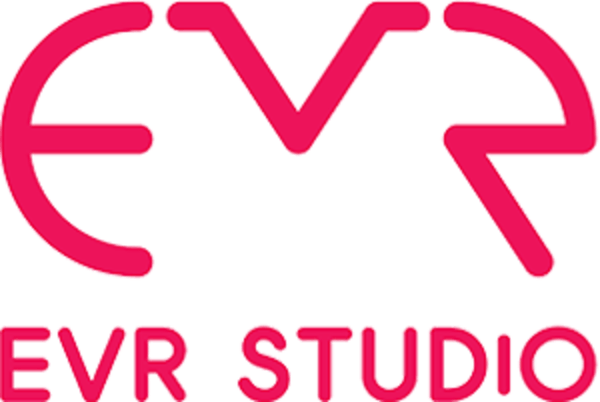
VR content company
Seoul, Korea
EVR Studio is a virtual reality (VR) content producer with the goal of creating virtual worlds where various real life experiences meet imagination. The company is currently focused on VR game development, mobile VR streaming solutions, and creative VR media production.

Online training platform for software coding
Seoul, Korea
Elice is an online training platform providing software coding education and student achievement management using machine learning and AI. The company offers various levels of classes such as programming base, data structure theory, and AI.

Online english tutoring
Seoul, Korea
English Central is a network of individuals that enjoy learning languages and learning about new cultures. Their network of qualified teachers includes graduate students, world travelers, and professionals. English Central offers classes to businesses, schools and individuals.

Math-specialized educational platform
Seoul, Korea
Freewheelin operates Mathflat, a subscription-based educational software tool for private, after-school academies. Mathflat’s test bank of hundreds of thousands of math problems enables K-12 math teachers to generate and grade assignments at different levels, and provide a personalized lesson for each student through tablets and PCs.

Fashion e-commerce
Seoul, Korea
Fumi runs a fashion brand catered to the aging consumer. Through Fumi, customers can discover and purchase unique fashion products directly from various online and offline distribution channels.

Web builder platform
Seoul, Korea
Imweb is a WYSIWYG (what you see is what you get) no-code web builder platform. Small brands, retailers, and influencers can create websites or shopping malls without technical expertise through Imweb’s service.

Matchmaking service
Seoul, Korea
Ium Socius is a social dating company with three different offerings: Ium, a service that recommends different dates to users daily; Ium Office, a dating service primarily for those that work in an professional office setting; and Mat-Eum, a customized premium matching service for existing subscribers.

Eco-friendly consumer packaged goods
Seoul, Korea
JK Inspir is a direct-to-consumer company that manufactures and distributes cosmetic brands globally. The company offers two different product lines: its eco-friendly women’s product brand, Audrey Sun; and its body care brand, The Baird Cosmetics.

Company and job reviews
Seoul, Korea
Braincommerce operates JobPlanet, a Korean online platform that provides jobseekers with crowdsourced information about the welfare, culture, strengths, and weaknesses of potential employers, along with available job opportunities.

Online resale platform for apparel
Seoul, Korea
KREAM is an online resale platform for authenticated limited-edition sneakers and streetwear. The platform utilizes a bid/ask model with dynamic pricing mechanics and a thorough authentication process, supporting buyers and sellers to trade limited releases in a secure and hassle-free manner.

Private label brand-based e-commerce
Seoul, Korea
Katcher’s operates an e-commerce platform focused on value-for-money merchandise through private label brands. The company offers consumers quality products at lower prices.

Vietnam-based B2B e-commerce platform
Ho Chi Minh City, Vietnam
Olik operates a digital B2B marketplace platform, Kilo, that connects wholesalers and retailers in Vietnam. Through its platform, Kilo provides digital management solutions to wholesalers, helping retailers select products with the best prices and shipping flexibility, and offers data analytics/insights to large CPG brands.

Marketplace for freelance services and micro-jobs
Seoul, Korea
Kmong is an online talent marketplace in Korea that enables individuals to both sell and buy services. Its categories include design, marketing, document, business, computer, music, video, and life services.

Mobile banking services
Tokyo, Japan
Kyash provides mobile payment and credit card account management services. The company aims to provide full-stack financial services to consumers and businesses and to transform the landscape of financial services in Japan.
kyash.co

Fully integrated laundry service
Seoul, Korea
Lifegoeson Company is an operator of Laundrygo, a subscription-based laundry cleaning service. The company specializes in taking and returning their customer’s laundry within one day at a lower cost than traditional laundry shops, providing customers with a complete and efficient alternative for their laundry.

Peer-to-peer consumer lending
Seoul, Korea
Lendit is a leading personal loan marketplace company in Korea. The company operates an online peer-to-peer (P2P) platform where investors can provide capital to those seeking loans while providing attractive yield to investors.

Online B2B fashion marketplace
Seoul, Korea
Linkshops operates a B2B e-commerce site where retailers can buy products from Dongdaemun’s wholesalers and have them delivered to their retail stores. Dongdaemun market has about 27 shopping malls, which is home to over 20,000 wholesalers.

Global crowdfunding for generation k-pop stars
Seoul, Korea
Makestar is a global entertainment content platform targeted at the K-pop community. The company offers a unique experience to fans by allowing them to communicate with artists and participate in content-making processes such as album production and concerts.

B2B marketplace for meat products
Seoul, Korea
Global Networks operates Meatbox, a B2B livestock e-commerce platform. By simplifying the meat distribution structure and transparently disclosing the market price, the company helps to reduce costs for restaurant and butcher shop owners.

Online beauty products
San Francisco, CA
Memebox is a global company focused on forecasting trends and creating private, in-house labels inspired by K-beauty. The brand has more than 5 million active beauty enthusiasts and best-selling private label collections like Kaja, I Dew Care, Nooni, Pony Effect and I’M Meme.
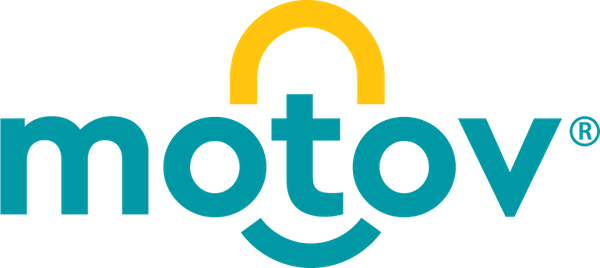
Billboard advertising provider
Seoul, Korea
Motov is a digital, taxi-op billboard provider that enables advertisers to connect with audiences through targeted, geofenced ad campaigns. Motov allows taxi drivers to earn additional income through advertising and local governments to enhance public services through collected street data.

Online service connecting local guides and travelers
Seoul, Korea
MyRealTrip is a travel platform where users can book tickets, accommodations, guided tours, and airline travel. MyRealTrip is committed to helping and providing a more valuable experience for Korean travelers who want to travel the world.

Mobile RPG game developer
Seoul, Korea
Natris is a casual mobile game developer formed by the early development team of successful mobile games such as I Love Coffee. Natris is currently targeting female customers, a demographic that has been largely underserved by game developers.
Mobile game developer
Seoul, Korea
Npixel is a game studio and publisher of mobile RPG titles founded by the core creators of Seven Knights, one of the highest grossing mobile RPGs. With the combination of along-standing team and a successful track record, Npixel is currently developing a variety of RPG titles targeting a global audience.

OneThird Sleep is a sleep-tech company that specializes in developing and manufacturing smart mattresses and mattress covers. The company aims to provide quality sleep products that incorporate smart technology and sleep-tracking functionality at an affordable price.

Video broadcasting
Seoul, Korea
Pandora.TV operates three different video-based services or products: Pandora.TV, an online video sharing platform; KM Player, a multimedia player which is used in 230 countries; and Prism, a video marketing platform.

Web drama production company
Seoul, Korea
Playlist is a web drama production company. Two flagship web drama series, Love Playlist and A-Teen have gained substantial popularity among the younger generations, contributing to the millions of global subscribers and billions of views over YouTube and Naver channels. .

Consumer insights platform
Jakarta, Indonesia (Singapore Holding Company)
Populix is a consumer insights platform, providing comprehensive research and data collection for businesses, institutions, and individuals to make more informed business decisions through quantitative and qualitative studies. The company offers a pool of authentic, verified, and highly targeted respondents throughout Indonesia that are readily available, providing quick and reliable responses that illuminate the preferences, habits, and opinions of Indonesian consumers.

Mobile camera and photo filter
Seoul, Korea
Retrica is a mobile camera application allowing users to capture and edit photos using filters. It offers over 150 filters and a variety of photo editing capabilities. Retrica has 30 million monthly active users worldwide.

Online sneaker and streetwear reselling platform
Tokyo, Japan
SODA operates SNKRDUNK, one of Japan’s largest sneaker and streetwear reselling platforms. The platform acts both as a marketplace and an online community for sneaker enthusiasts. In partnership with Fake Busters, Japan’s leading authentication service provider, the company guarantees safe and secure transactions through its double authentication process.

Car-sharing and ride-hailing platform
Seoul, Korea
Socar operates the number one car-sharing service and the number one ride-hailing service in Korea called TADA, which launched in October 2018. Socar is the leading mobility player in Korea with 4.5 million Socar members and over 400,000 TADA users.

Out-Of-Home digital advertising network
Seoul, Korea
SpaceAdd is building an Out-Of-Home (“OOH”) advertising network focused on digital signage in high traffic, underdeveloped properties throughout Korea.

Audio live streaming
Seoul, Korea
Spoon Radio is a real-time personal audio broadcasting platform designed to share stories, ideas, favorite music, and more. Spoon also allows users to create personal broadcasts and listen to user-generated content.

Online study group service
Seoul, Korea
Studypie is an online study group platform. The company offers a variety of customized education services in various subjects such as machine learning, blockchain technology, coding, writing, marketing, stock investment, design, and foreign language.

Online to offline retail space sharing service
Seoul, Korea
Sweet Spot operates a marketplace for pop-up stores seeking short-term retail space. Through the marketplace retailers can connect with building owners who can provide available space with short-term rental contracts.
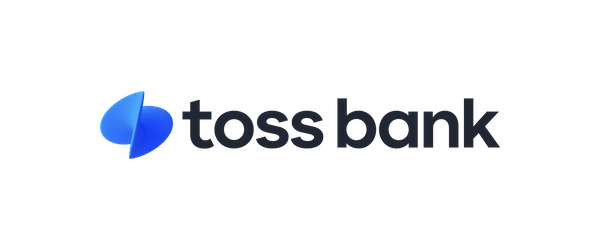
Internet bank
Seoul, Korea
Toss Bank is a fully licensed internet-only bank optimized for mobile and digital environments. With a focus on financial market innovation, the bank specializes in providing solutions to niche areas of the market not fully served by existing banking services.

Book club operator
Seoul, Korea
Trevari operates subscription-based book clubs in Korea. Members can join clubs covering various topics and participate in monthly discussions at multiple sites across Seoul. Trevari aims to encourage reading culture and bring people of similar tastes together.

Mobile payments service
Seoul, Korea
Viva Republica operates the mobile app, Toss, which transforms the way P2P payments are conducted in Korea. The company has also launched over 10 new financial services to become the leading consumer mobile financial services platform in Korea.

AI-based software developer
Seoul, Korea
VoyagerX builds a variety of AI-powered solutions and tools that leverage deep learning capabilities. The company’s projects include vFlat, a mobile scanner app that analyses the curved surface of a document or book and scans the document flat; Vrew, a video editing app that allows users to edit videos and automatically generated scripts; and Ownglyph, a font platform that creates personalized digital fonts based on handwriting.

Restaurant reservation platform
Seongnam, Korea
Wad operates Catch Table, a real-time online reservation platform for fine dining restaurants in Korea. Through Catch Table, restaurants can manage their seat inventory and customer relationships, and users can book and search the restaurants based on user reviews, region, price, and other preferences.

Server monitoring
Seoul, Korea
WhaTap Labs provides cloud-based server monitoring solution services. The IT-Integrated Monitoring Service addresses customer needs by providing both SaaS and installable systems. More than 1,000 corporations use WhaTap’s monitoring service.
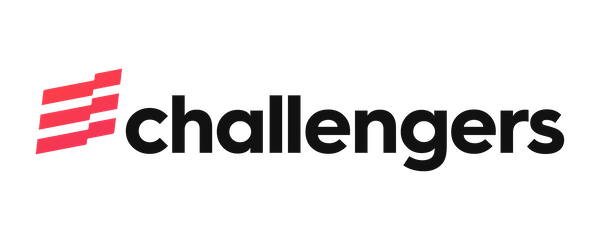
Developer of “CHLNGERS” – a goal accomplishment mobile app
Seoul, Korea
Whitecube runs a self-improvement app, Challengers, designed to help people cultivate good habits and improve productivity with financial incentives. The platform offers users to bet on a health-related goal with their own money and get reimbursement and prizes upon completion of day-to-day tasks. The company also operates a health and wellness-focused e-commerce platform to help users achieve their goals.

Subscription service for grooming products
Seoul, Korea
Wisely is a direct-to-consumer company providing a razor blade subscription service at an affordable price. The company uses a streamlined manufacturing and distribution process to provide high-quality German razors at a price below competing razor brands.

Mobile fashion metasearch service
Seoul, Korea
Kakao Style runs a mobile fashion shopping platform, ZIGZAG, that has a listing of more than 4,000 online shopping malls and brands. The app guides users with better matching and customized recommendations based on user-specific shopping patterns and provides an integrated payment service Z Pay that allows them to place items from different shopping malls in one basket and pay at once. The company merged with the spun-off fashion division of Kakao Commerce, a subsidiary of Kakao (KRX:035720) in July 2021.

Apartment and housing rentals
Seoul, Korea
Zigbang operates a real estate broker platform, which connects tenants, proprietors, and real estate agents, and an informational platform, which shares the latest real estate transactions. Zigbang is the number one mobile platform for property search in Korea.

Online marketplace for interior design
Seoul, Korea
Zipdoc is a comparative interior design platform that connects interior designers with customers. Users coming from a currently fragmented market can benefit from an end-to-end experience to include receiving estimates, side-by-side comparisons, and contract finalization.
PHILOSOPHY
How Do You Know?
“What gets us into trouble is not what we don’t know. It’s what we know for sure that just ain’t so.”
– Mark Twain

For more than a decade, we have been teaching an annual session of a legendary investment class taught by Professor Jack McDonald. While Jack is sadly no longer with us, we go back every year to answer questions posed by smart, curious, yet skeptical students who get to meet many top institutional investors representing different strategies across both private and public markets. The most prevalent questions tend to be a variation of “how do you know?” Some examples include:
- How do you know that a new investment is going to generate great returns?
- How do you know if a founder can grow to become a great leader?
- How do you know, after a huge gain, if you should continue holding?
- How do you know when to sell or double down?
The first two questions are most relevant at the time of the initial investment. The latter two are more relevant for follow-on investment decisions, which we think about as a decision to hold, sell or buy more (i.e. double or triple down).
We’ve been fortunate to have made some good decisions that may look prescient. The truth is, in the beginning, we never knew how things would turn out. We’ve also made countless mistakes and experienced venture capitalists should become more humble over time as the mistakes pile up. In the VC business, no matter how much due diligence is done, an initial investment is just the beginning of a journey, which Sequoia’s Mike Moritz has described as a “giant step into the unknown.” [1]
Even with the benefit of hindsight, it’s hard to know the truth due to cognitive biases such as hindsight bias and the narrative fallacy. According to Nassim Taleb, “human nature makes us concoct explanations for its occurrence after the fact, making it explainable and predictable.”
If we cannot be certain looking at the past, then it’s even more difficult to predict the future. All we can do is make decisions based on the information available at the time, and the outcome will be the outcome. The focus should be more on the journey rather than the destination.
That said, we can also focus on a few things that are within our control after we’ve already made the initial investment. So much has been written about how VCs make initial investments. The purpose of this post will be to focus on the neglected but critical follow-on investment decisions.
The follow-on investment questions may also be interesting to entrepreneurs who might wonder when to exit. Or keep going? LPs also ask these types of questions as they try to understand why we sell certain companies while doubling down on others.
The “lazy” option: Pro-Rata Investments
Most early stage angel or venture investors get their maximum ownership up front and get diluted over time if companies raise more money. If they have the money, they may try to protect their ownership interests by exercising pro-rata rights to invest in the later rounds.
However, we would never want to exercise our legal rights to force our way into a round. That would mean our relationship with the company is fundamentally broken. Such situations would not lead to satisfying or productive long term relationships.
Sometimes, existing investors do need to invest in a later round to show insider support in order to attract fresh capital. We feel a sense of responsibility in such situations and will be inclined to show some support. However, in general, we believe investing the pro-rata allocation is the “lazy” option, especially in our best companies. Why is that?
In great companies, financings tend to be oversubscribed. When there is a lot more demand for a stock than supply, insiders do not need to invest and may even be able to sell to later investors. In such situations, we may make a conscious decision to invest as little as possible or even sell, if the price is right.
However, depending on the company, we may also make the opposite decision to invest more than pro-rata, and perhaps take the entire round. Either way, the default of investing pro-rata is not how we approach follow-on investments in our best companies, where we generate the vast majority of our returns.
Like most early stage VCs, we typically reserve one dollar for every dollar invested in the initial round. In practice, however, across 100+ companies over 20+ years, we’ve ended up investing far less than the amount reserved (about 60 cents to the dollar, or 0.6x the initial investment, on average).
However, averages do not tell the whole story when analyzing venture portfolios. When one of our companies starts to become a compounding machine, we may commit a lot more money as well as time to let the compounding make a difference.
We have committed 5 to 10x, and, in a couple of cases, more than 100x our initial investment (rather than 0.6x). We may invest across multiple funds and through SPVs that may be larger than entire funds, just to invest in a single round.
Some people might think that is nuts. Given the history of bubbles and crashes in the venture industry, paper gains are viewed with great suspicion. For LPs, what counts is “the moolah in the coolah.” So why would we not take some money off the table, return capital to LPs, and increase DPI?
To answer, we go back to the questions of “how do you know” when to hold, sell, or double down?
Four Simple Questions
When initial VC investments are made, no one knows what will happen. However, over time, the answers to four or five very basic questions inform our yet-to-be-made decisions on whether or not to lean-in with larger investments or sell or simply hold.
1. Does the company generate cash?
If you watch HBO’s Silicon Valley or follow the venture ecosystem in the press, you might think that VC-backed companies don’t need to make money. Growth trumps profits. Blitzscaling, or “go big or go home,” are common mantras (except during crashes).
Having survived multiple economic downturns, we prefer to take a different path. High burn rates make us nervous. After our investment, over time, if we do not see capital efficiency and a path to control our own destiny (through positive cash flow), the company would fail this first simple test.
As the coronavirus sends shock waves through the economy, our best companies, those with strong balance sheets and profitable business models, will emerge much stronger. Many weak companies will not survive and that is capitalism. Difficult times are when the best companies separate from the pack.
2. What is the moat (or competitive advantages)?
Building a business that generates significant profits and free cash flow is not good enough. Capitalism can be cruel and creative destruction is common, especially in the tech industry. More important than profitability is defensibility which enables sustainability. What is the moat around your economic castle? If you don’t have one, marauders will take over and the compounding will stop.
Examples of moats are network effects, IP, distribution, brand and/or other competitive advantages. However, the most important moats often turn out to be secrets discovered along the way. This is one of the reasons that we do not (and cannot) know which companies will succeed ex ante.
A company that passes this second test becomes a much more interesting candidate to become a long term hold or what some VCs call a long buy. If we do not see a great moat, or if we see it eroding, the company would no longer qualify to be a longer-term hold.
3. How do we feel about the relationship?
The third question is the most subjective as well as the most difficult to answer in the beginning. In early-stage investing, there are no good metrics (yet) so the people are paramount to the initial investment decision.
For follow-on investments, there will be more business metrics and operating history to analyze. However, paradoxically, we’ve learned that the people and our relationship with them may end up being the most important factor, even at the later stages.
When we evaluate the relationship, we don’t just look at how we are treated. We observe and learn from the type of relationships with other stakeholders. How do they treat employees and customers? Is there trust? What is the employee turnover and customer churn?
We might ask, will management call us to talk about an important problem? We certainly do not require them to have us on speed dial but if the relationship is not great, we will not know what is really going on. We would be like any other investor — an outsider looking in.
We will become increasingly uncomfortable holding onto an outsized, concentrated position in a company where we have little knowledge or influence. Therefore, any company with which we do not have a great relationship would no longer qualify to be a long-term hold.
4. How much liquidity do you need? How much liquidity do you want?
The fourth key question becomes relevant only after a company becomes somewhat successful. Only then, can we ask the question, “how much liquidity do you need?”
The answer often depends on the lifestyle and personal needs of employees. We would want key people to have enough liquidity to reduce financial stress so that they can focus on the long term success of the business. Great private companies should be able to provide interim liquidity through secondary transactions and even dividends and stock buybacks, long before IPO or an M&A exit.
If a company continues to do well, at some point, we might ask the next logical question — “how much liquidity do you want?”
This is where it gets interesting. If the amount of “want” starts to exceed a certain level, it may be time to call it a day. By the time a company reaches this level, entrepreneurs have worked hard for a long time. If they want to do something else with their lives, maybe we should fully exit and part ways as friends?
However, every once in a while, we come across entrepreneurs for whom it’s no longer about the money. It’s about loving the work itself, making a difference, and fulfilling a mission. Such entrepreneurs (who we have called Hedgehogs), always feel like they are just getting started.
So, the next time you wonder “how do you know?” The answer is simple. We may not know in the beginning. But over time, we learn and make adjustments, sometimes dramatic, to the capital we allocate across the companies in our portfolio. Rather than trying our luck at venture lotto, we prefer to commit our time and money in companies where we have the most conviction, which also tend to be where we develop the best and most enduring relationships.
[1] VC: An American History by Tom Nicholas
Cargo Cult Capital
During a Caltech commencement address one of my childhood heroes, Richard Feynman, introduced a tribe of people who practice a peculiar form of science. Here is an excerpt:
“In the South Seas there is a cargo cult of people. During the war they saw airplanes with lots of good materials, and they want the same thing to happen now. So they’ve arranged to make things like runways, to put fires along the sides of the runways, to make a wooden hut for a man to sit in, with two wooden pieces on his head to headphones and bars of bamboo sticking out like antennas — he’s the controller — and they wait for the airplanes to land. They’re doing everything right. The form is perfect. It looks exactly the way it looked before. But it doesn’t work. No airplanes land. So I call these things cargo cult science, because they follow all the apparent precepts and forms of scientific investigation, but they’re missing something essential, because the planes don’t land.”
In past articles, we’ve described VC investments as “controlled experiments.” We don’t build new businesses through random trial and error; we develop them through a process of deductive tinkering. We try things out and perform tests against market realities, the way that scientists set up experiments to test hypotheses – and iterate and adapt along the way.
Unfortunately, almost three hundred years into the scientific revolution most people still don’t get it. Perhaps this should not be a surprise. From a genetic perspective, humans beings are still pretty much identical to neanderthals who honed their instincts roaming the Earth for more than two million years.
Using Feynman’s analogy, many people practice a form of business which I call “cargo cult capitalism.” Delusions in the business world have been covered in books such as “Fooled by Randomness,” “Hard Facts” and “The Halo Effect” so I’ll focus on a special form of cargo cult capitalism practiced right here in Silicon Valley.
In our neck of the woods, the planes revolve around “top tier” venture capitalists who have become mini celebrities…sort of like in college sports, where coaches tend to be the stars (in the big leagues players are the stars). If entrepreneurs are fortunate enough to get funding from a Silicon Valley celebrity, their company might gain instant credibility and become branded as the next hot thing.
There are service providers who market the fact that they have “access” to the top VCs. There are later stage funds who raise money based on claims that they can access deals of the top firms. There are also angels and “feeder funds” who hope to co-invest with top VCs by courting them from the other side. They cultivate relationships with powerful deal makers and give them first looks at deals so that they might invest once key “milestones” are met.
The cargo cult capital wheel keeps spinning around and around…as the crowds scramble to “get in” to what is hot (or what they speculate might get hot). Once funded, some entrepreneurs might feel like they are playing with the big boys. They retain the top law firms, the best PR agencies, and the most exclusive recruiters.
Armed with prestigious backing and exclusive relationships of kingmakers, the hottest companies hire the best talent that money can buy. The hired guns then create more frenzy…attracting even more capital to support ballooning headcounts and lofty salaries.
There are definite patterns followed by the cargo cult crowd. The form is perfect – the top deal makers, “world class” talent, a hot sector and business model du jour. Yet, ironically, I’d bet the next Bill Gates, Michael Dell, Phil Knight, Chuck Schwab, and Sam Walton are quietly going about doing their own thing…building companies based on business fundamentals.
Real entrepreneurs cut through the hype – they know what is essential. Their sense of pride doesn’t come from who they know or what others think – it comes from making a contribution and creating value. They will do it their own way – which won’t include wads of cash from outsiders. They figure out how to do more with less by using their brains, guts, and sweat.
Disruptive new entrants that topple giants belong to determined, frugal and independent minded entrepreneurs – and in their minds, the true stars are the customers they serve and their tireless co-workers who help turn dreams into realities.
A Modest Proposal for the Venture Industry: Better Customer Service
There has been much talk lately about the demise of the venture capital industry. Big funds are imploding after a decade of poor industry returns. The causes are many: wacky capital markets, Sarbanes-Oxley regulation, ballooning fund sizes, misaligned incentives, generational turnover, etc. Reviving the industry was such a big topic at this year’s National Venture Capital Association meeting that NVCA leaders issued a bold set of proposals to jumpstart the industry.
I haven’t spent much time trying to dissect the causes of our industry’s current malaise. But one thing I know for sure is that we are doing a lousy job of basic customer service. How bad? If you google “venture capitalists suck” you will get more results than “United Airlines sucks”. A totally inaccurate measure to be sure, but to be anywhere near United Airlines on the suckage scale is not something that our profession should be proud of. I think we can do better.
So let me make a more modest proposal.
We venture investors could do a lot for the reputation and health of our profession by getting back to the basics of good customer service.
Many of us have forgotten that our business, after all, is to serve investors who entrust us with their capital and entrepreneurs who entrust us with their dreams. Having raised money at three start-ups before starting in venture, I have more than a few opinions on how venture professionals could act more, well, professional. Let me start with a few simple ones:
1. Return calls (and emails)
One of the classiest and most successful venture investors I’ve ever met is Brook Byers of Kleiner Perkins. Early in my career, I asked him at a panel discussion to share the secret to his success. He explained that one of his basic rules of doing business was to call people back by the following day. It sounds so simple, yet every week I talk to entrepreneurs who drive themselves insane wondering when the VC they met is going to call them back. I’m not talking about unsolicited inquiries (only the appropriate ones of which deserve a response); I’m talking about getting back to people with whom we’ve already met. Email overload is no excuse. Not when we’re checking our Blackberries every five minutes.
2. Pay attention
Which brings me to my next suggestion. I vividly recall pitching my third startup to a famous Sand Hill venture capitalist back in 1999. We had studied his portfolio, prepared a customized presentation and shown up early for the meeting, only to have him spend the hour distractedly munching a bag of peanuts and tossing the shells on the table in front of us. Now that a decade has passed and peanuts have given way to Blackberries, it is a rarity that I sit through a meeting where a VC is not checking email, surfing the Web or popping out to make a phone call. What’s the point of making all the physical effort to get face-to-face only to be mentally absent? I’m as guilty as any, so let me resolve immediately and publicly to put my Blackberry away when meeting with entrepreneurs, or at least use it as a drink coaster.
3. Just say NO
Given that we need to turn down 99% of the ideas that come our way, you would think that VCs would be pretty good at saying “no” to entrepreneurs. The best salespeople and entrepreneurs know that a quick “no” is better than a long “maybe”. Some of my VC colleagues don’t like to say “no” to keep their options open for a potential investment, but the vast majority just don’t like using the two-letter word because they are nice people. They hem and haw and say something about having to “talk to the partnership”, then worry for weeks about how to make up a reason for declining the opportunity. I’ve resolved to either tell entrepreneurs in the meeting or get back to them within a week. It sure has made my life a lot easier and I hope it’s helped them waste less of their precious time.
4. Be accountable
All this is easy to say, but aside from some community rating sites like thefunded.com, venture capitalists are simply not accountable to entrepreneurs. At Altos, we’ve begun measuring the time it takes us to get initial and follow-up responses to entrepreneurs, but we are by no means perfect. For a profession that generates all of its returns from the hard work of entrepreneurs, we sure do a lousy job of customer service. So hold me to what I say. Call me on it. If I (or my partners) don’t follow my own advice in this blog, just email alee@altosventures.com and you’ll get a response from me. If I still don’t get back to you, then you should probably give up on us and try United Airlines instead.
Why Big, Why Now, Why You?
I am often asked by entrepreneurs what constitutes a really great startup pitch. I’ve literally seen thousands of pitches and given a fair share of my own. I’ve been convinced, amazed, bored to death and even moved to tears. I’ve given more than a thousand myself – to receptions ranging from standing ovation to heads-on-table.
Fundamentally, a good pitch is a good story. It’s not just facts and figures and analysis. In addition to understanding a business opportunity logically, investors need to feel a business opportunity emotionally. A good story (told by a compelling storyteller) does just that. It activates our gut and makes us viscerally excited by the business proposition. In discussing this post, my entrepreneur friend @danmartell reminded me of the venerable sales proverb: “people buy on emotion and justify with logic.”
Many entrepreneurs in our business have technical or analytical backgrounds and love to expound on the “what” and “how” of their technology solutions. That is all fine, but often what I really care about – and what I have come to see as a common thread in the best presentations – is “why”. Specifically, there are “3 Whys” that I want to see in every pitch:
1. WHY BIG?
Most entrepreneurs answer this question by simply including a market size chart in their presentation. Whether calculated through bottoms-up analysis (often bogus) or citing a market research firm (always bogus), this is a basic and necessary exercise. But what makes a good pitch into a great pitch is when entrepreneurs can articulate the scale of the opportunity in a way that I can feel in my gut and not just get in my head.
Social science has shown that people are far more moved by stories told in terms of actual individuals rather than in aggregate figures that can be too much for our simple brains to grasp. In the same way, the most effective entrepreneurs describe the problem they are solving in very personal terms. They talk about a specific customer or about their own experience with the pain they are trying to solve.
2. WHY NOW
This next point is one that entrepreneurs almost always miss and so it is one that I have come to feel is the most critical. So much of startup success is dictated by good timing. I launched a social bookmarking startup in 2000 with a terrific technical team and top-tier venture investors; but we were simply too early – nine years earlier than Delicious and StumbleUpon, companies that succeeded with almost identical services at a different time.
A great startup pitch MUST answer the question “why now” – why market conditions, user behaviours, technology trends or other macro forces are combining in just the right way to smooth your path to success.
3. WHY YOU
Finally, if the market is big and happening now, investors need to understand why YOU and your product are the right ones to bet on. This is the jockey part of the famous horse vs. jockey debate in venture investing. For every great market opportunity, we assume there are dozens of smart and potentially well-financed teams around the world going after it. What about your expertise and team give you a clear advantage – your domain experience, your tenacity, your coding skills? What about your product makes it clearly superior to others in technical approach or customer perception? Why will you have the “last mover advantage” and dominate the category in the long-run?
These three simple questions – why big, why now, why you – are at the heart of what distinguishes a great story from a merely good one. If you want your startup pitch to stand out, make sure you’ve nailed the answers.
Ousting the Founder
A version of this post was originally published in July, 2008 right after Diane Greene, the co-founder and CEO of VMWare, was ousted from her company. The post has since been updated.
There is no doubt that Diane Greene was a controversial CEO. She was difficult to work with. It was her way or the highway and she churned through senior execs, especially in sales and marketing. She never gave much respect to the folks at EMC either (EMC owned the vast majority of VMWare’s stock – and controlled the board).
Some other hard-headed, “controversial” founder/CEOs that come to mind are Bill Gates, Larry Ellison, Steve Jobs, Jeff Bezos and Mark Zuckerberg. These founders may be difficult to deal with but I’d rather go with them than take my chances with a new hired gun CEO.
Over the years, we’ve observed that it’s difficult, if not impossible, to match the passion and commitment that founders bring to their companies. It’s not just a job for them. It’s deeply personal. The difference in commitment is akin to the differences you might observe between missionaries and mercenaries (or hedgehogs versus foxes).
Look, we have nothing against professional CEOs. They are very smart, capable and hard working people (and we’ve hired plenty of them over the decades). But the whole situation reminded us of the time Steve Jobs was ousted from Apple more than 20 years ago.
As co-founder and CEO, Diane Green built one of the all time great successes in Silicon Valley. Very few companies ever reach $1B in revenues. Even fewer in the technology industry. Even fewer in the software industry. And even fewer ever reach tens of billions in market cap.
Unfortunately, VCs oust founders all the time (even the ones that proclaim to be “founder friendly.”). We’ve been in plenty of board level discussions around this topic.
It’s almost a rite of passage in Silicon Valley. As a founder, you start a company, get VCs to fund you, recruit a “world class” management team…and eventually, find your replacement (or get ousted).
What people seem to miss, however, is that just about every great company ever created – in technology as well as low-tech, was built by a founder (or a CEO who happened to join the company very early in its growth phase) and a team of dedicated people who grew with their companies over decades.
We don’t believe in “world class” management in the generic sense. “World class” in what??
What we believe in are people who learn on the job and become – over time – the best at what they do. Along the way, they make plenty of mistakes. But that’s part of the learning process (and perhaps the luck of it – because the mistakes happen to be not fatal during the trial and error process).
Some examples of great companies led by founders for decades are GE, UPS, FedEx, Wal-Mart, Southwest Airlines, HP, Intel, SAP, SAS, Apple, Oracle, Microsoft, Adobe, Sun, Dell, Qualcomm, Broadcom, Nvidia, Dolby, Amazon, Google, Netflix, Salesforce, etc.
There are some great companies where the original founder(s) did not grow the company but the CEO who grew the business to $1B+ in revenues joined very early on in the life of the company (typically below $10mm in sales): IBM, McDonald’s, Starbucks, Veritas, and Cisco are examples.
It’ll be interesting to see what happens. Even a founder hanging on to the bitter end won’t save some companies (i.e. Wang, DEC). But we would rather take our chances with a founder who built a $1B business from scratch than go with someone new.
The average tenure of the CEOs in our five largest companies is more than 13 years. They learned on the job. Only one of them had been a successful CEO before we started working with them. None had much experience in their industry – the market did not exist, and the technology and business models had not yet been invented. But they are guys who took us this far (average revenues of well over a billion dollars) and we will gladly stick with them as long as they still want the job.
We would rather take our chances with the people who built the business and grew their companies than the “professionals” – the hired guns – the mercenaries – coming in, after the fact, to “fix” things or to “take it to the next level.”
We tell all of our companies this – if you want to build the leader in your industry, you have to have the world’s leading experts in your field working for you. But do NOT expect to find them outside of your company. Someone senior from the outside won’t come in to show you the way. They won’t save you.
Think about it. If you can go outside and hire a CEO or other very senior executives to come in to YOUR company and tell you what to do and how to do it – better than you – then you’ve created nothing special. There is no secret sauce and you have NO CHANCE of building a truly great company.
We like to tell all of our companies this – the world’s leading experts in your business will be the people you develop. The young people you hire today will be your future leaders. Five to ten years from now, they will be the world’s leading experts in your business. You will have to figure it out along the way.
Don’t count on those mythical “world class” managers to come in to save the day. Not only are there no guarantees, I believe they will end up hurting your chances of building a special, lasting company. If you do try to hire them anyway…good luck. What we will guarantee is this – they will negotiate hard for a nice severance package.
Decoding Due Diligence
One of the most mystifying parts of venture fundraising is the murky process of due diligence. There is a ton of advice out there on how to get in and pitch a venture investor, but little on how to manage the boring-sounding but critical due diligence process. Yet this is where make or break happens for many venture deals. Due diligence is the homework that investors do – tech reviews, reference calls, market checks – to understand the opportunities and risks of an investment. For some investors, diligence is a structured process. For others, it’s an informal dating ritual. Either way, it’s important for entrepreneurs to understand the process and manage it. Here are a few things you should keep in mind:
1. Know the difference It’s important to know where you stand with a potential investor – how serious are they about the opportunity? One way to is to ask if you are in “exploratory” or “confirmatory” diligence. There is a huge difference between the two. Exploratory diligence is when an investor is gathering data to figure out if they are interested in the opportunity. This can be time consuming and a long exercise in free education. Confirmatory diligence is when an investor is inclined to do the deal and is checking the facts. Really good investors will approach your market and company with a thesis and have done a lot of their homework before they even meet you. Exploratory diligence typically precedes a term sheet and confirmatory diligence (including legal reviews and reference checks) happens after. If you’re more than two meetings in with an investor, it is entirely fair to ask which phase of diligence you’re in – that will help you know where you stand.
2. Make it easy The best entrepreneurial fundraisers make it easy for investors to get through diligence quickly. All startups have their issues, and it can be helpful for entrepreneurs to frame key issues and risks themselves before they become potential objections. This kind of framing is a great way to build openness and trust; it also helps to see if you and your potential investor see things in the same way. As a practical matter, have materials ready in an online folder for both investor and legal diligence: financials and key metrics, team and customer references, product documentation and all your legal documentation. That will make it easy and speed up your fundraising process.
3. But don’t give it away Good salespeople know how to ask their prospects for things as they move along the sales process. While I’ve made the point above that you should be ready with all the data an investor needs, you should also be careful about what you share and when. You have a right to ask for increased interest/commitment as you share more diligence materials. One of the classic examples here is customer references: it’s not uncommon for investors to want to do a few or even dozens of customer calls. Share these precious references sparingly, and only when investors are serious – it’s a good way to qualify their interest.
4. Do your own It’s a cliché that taking capital from an early-stage investor is like a marriage. Yet it’s amazing to me how many entrepreneurs don’t bother to check out their potential partner. Public sources like Crunchbase or TheFunded make it increasingly easy to find out more about investors – including the failed investments they don’t list on their websites (those are the ones you probably want to call). At Altos, we always encourage entrepreneurs to call our CEOs – including the ones that we’ve had to transition out of companies – and check us out. How do we contribute, how do we think, how do we act in tough situations?
Due diligence is more than a check-the-box exercise. Managed wisely, it can be a way to move along the fundraising process – a process that the best entrepreneurs know how to manage and expedite.
Learning to Give a Damn
Almost every venture capitalist I know lists passion as one of the most important traits they look for in entrepreneurs. Most VCs, I am sure, also talk about their own commitment and passion when pitching themselves to limited partners.
My personal lessons in observing people with real passion came from my Army days as a 22 year-old lieutenant in charge of about 40 people.
On one Saturday night approaching midnight, my boss called me at home. He said, “LT (that is what we were called, especially when he was angry about something), come over to the motor-pool right now.” The motor-pool was where we kept all of our equipment such as trucks, tanks, dozers, etc. When I got there, I saw my boss standing nearby a truck with a flashlight. As he saw me approaching, he threw a maintenance book at me, and said, “We are going to go through the standard maintenance inspection of this truck…together.”
When we got done, we found the truck with only half-filled gas tank (it is supposed to be full at all times when inside the motor-pool), malfunctioning fire extinguisher, and without several items that belonged in the truck at all times. After the inspection, I was embarrassed. My boss then smiled, held up a cigarette butt, and said, “LT, I knew one of your trucks was due in around 11PM. So, I just came by and looked inside the truck. And I found several cigarette butts and empty coke cans. I knew then I had to teach you an important lesson on leadership. That is to give a damn.”
He then explained, “If a soldier does not care to clean up the truck when he reports back in, then he probably did not bother refueling. Furthermore, there is a high probability that he is not taking care of the truck every day.” At that moment, he grew very serious, and said, “You have to care. You have to make sure your soldiers care. Otherwise, you and I will be explaining to the soldier’s loved ones why his truck ran out of fuel, did not reach the destination, and got killed by enemy fire.
My second lesson came from a sergeant who was at least a decade older than me. On the first night of our field exercise, he got me up in the middle of the night. He said, “Sir, get up. You don’t have time to be sleeping. Come with me.” He then took me around every guard post, checked to see if anyone had wet boots (and when he/she did, immediately had them change socks and boots and personally applied foot powder), and talked with them about family, girlfriends/boyfriends, and football teams, etc.
After checking with every guard, he then said, “Sir, the guards change every two hours. You should get some shut-eye now. But in thirty minutes, I am going to wake you up. And you are going to do what I did with every set of guards.” My sergeant truly cared about his soldiers. He wanted to make sure I also learned to give a damn.
My Army days feel distant as I go through my days as a venture capitalist. The risks VCs take on are far from matters of life and death, but the lessons I learned in giving a damn gives me proper conviction to stick to what we call a responsible way to build companies.
I wonder …what would all VCs do if they gave a damn?
If VCs gave a damn, they would be more interested in building special companies than flipping them, just to make money. They would pay attention and not spray and pray their investments, hoping to get lucky.
Also, they would not over-commit by taking on too much money, too many companies and too many board seats. They would capitalize companies responsibly, not according to how much money they had to invest.
Finally, they would take the time to get to know the businesses and people involved. They would focus on developing talent and not rush out to hire mercenaries looking for quick fixes. There are no short cuts. It is critical to make the proper trade-offs between growth, profitability and sustainability.
Learning to Give a Damn
Almost every venture capitalist I know lists passion as one of the most important traits they look for in entrepreneurs. Most VCs, I am sure, also talk about their own commitment and passion when pitching themselves to limited partners.
My personal lessons in observing people with real passion came from my Army days as a 22 year-old lieutenant in charge of about 40 people.
On one Saturday night approaching midnight, my boss called me at home. He said, “LT (that is what we were called, especially when he was angry about something), come over to the motor-pool right now.” The motor-pool was where we kept all of our equipment such as trucks, tanks, dozers, etc. When I got there, I saw my boss standing nearby a truck with a flashlight. As he saw me approaching, he threw a maintenance book at me, and said, “We are going to go through the standard maintenance inspection of this truck…together.”
When we got done, we found the truck with only half-filled gas tank (it is supposed to be full at all times when inside the motor-pool), malfunctioning fire extinguisher, and without several items that belonged in the truck at all times. After the inspection, I was embarrassed. My boss then smiled, held up a cigarette butt, and said, “LT, I knew one of your trucks was due in around 11PM. So, I just came by and looked inside the truck. And I found several cigarette butts and empty coke cans. I knew then I had to teach you an important lesson on leadership. That is to give a damn.”
He then explained, “If a soldier does not care to clean up the truck when he reports back in, then he probably did not bother refueling. Furthermore, there is a high probability that he is not taking care of the truck every day.” At that moment, he grew very serious, and said, “You have to care. You have to make sure your soldiers care. Otherwise, you and I will be explaining to the soldier’s loved ones why his truck ran out of fuel, did not reach the destination, and got killed by enemy fire.
My second lesson came from a sergeant who was at least a decade older than me. On the first night of our field exercise, he got me up in the middle of the night. He said, “Sir, get up. You don’t have time to be sleeping. Come with me.” He then took me around every guard post, checked to see if anyone had wet boots (and when he/she did, immediately had them change socks and boots and personally applied foot powder), and talked with them about family, girlfriends/boyfriends, and football teams, etc.
After checking with every guard, he then said, “Sir, the guards change every two hours. You should get some shut-eye now. But in thirty minutes, I am going to wake you up. And you are going to do what I did with every set of guards.” My sergeant truly cared about his soldiers. He wanted to make sure I also learned to give a damn.
My Army days feel distant as I go through my days as a venture capitalist. The risks VCs take on are far from matters of life and death, but the lessons I learned in giving a damn gives me proper conviction to stick to what we call a responsible way to build companies.
I wonder …what would all VCs do if they gave a damn?
If VCs gave a damn, they would be more interested in building special companies than flipping them, just to make money. They would pay attention and not spray and pray their investments, hoping to get lucky.
Also, they would not over-commit by taking on too much money, too many companies and too many board seats. They would capitalize companies responsibly, not according to how much money they had to invest.
Finally, they would take the time to get to know the businesses and people involved. They would focus on developing talent and not rush out to hire mercenaries looking for quick fixes. There are no short cuts. It is critical to make the proper trade-offs between growth, profitability and sustainability.
Focus on the Controllables
I came across this great quote by a guy whose father ran a jewelery store during the Great Depression. He carried on to build Helzberg Diamonds into a big enough (and wonderful enough) business that Warren Buffet eventually wanted to buy it:
“When growing up, I was intrigued that my father only concerned himself with those business elements that were controllable. He refused to acknowledge the Depression and did quite well during that period. He was unwilling to talk about recessions or 20-inch snowfalls. He only thought about and talked about those conditions within his control. I saw this daily in Dad’s actions. I never knew when the country was in a recession because Dad wouldn’t talk about it. People would suggest we close the store on Labor Day because everyone would be out of town. He’d say, “How many will be gone?” Of course, we’d stay open and do just fine. He taught us to concern ourselves only with those things over which we have control. I thought he was unique in this until I realized this is one of the key common traits of highly successful people. Those folks are never victims; they take what comes and handle the situation. The rest is a waste of time.”
– Barnett C. Helzberg (from “What I learned Before I Sold to Warren Buffet“)
This quote hit me like a ton of bricks. Barnett Helzberg, in describing about his father, simply and concretely described a prototypical “hedgehog entrepreneur” in a way that I could not. (See Foxes and Hedgehogs).
Hedgehogs don’t concern themselves with a lot of nonsense. They know what matters. They ignore the rest.
There are some clever foxes who see themselves as intellects who have a mission in life to combat oversimplification. They like to say, “well, actually it’s a bit more complicated than that.” True. Unfortunately, in the process they may obfuscate the issues.
Albert Einstein once said, “any intelligent fool can make things bigger, more complex and more violent. It takes a touch of genius – and a lot of courage – to move in the opposite direction.” Most people understand that it takes intelligence and deep knowledge to simplify (if you can’t explain something simply, then you really don’t understand it). But why does it take “a lot of courage”?
Reducing complexity involves making decisions. If you choose to march down a certain path, it means you are cutting off your other options. In business and life, we always have to make decisions in environments of uncertainty. The need to choose can create fear, anxiety and paralysis. The choices can be tough.
By choosing, you are rejecting other options. You live with the consequences. Sometimes, it can be a matter of choosing between the lesser of evils. It’s never black or white. We live in a Machiavellian world – full of greys (whatever his faults may have been, Machiavelli was a realist. He tried to see the world for what it was, not what he wished it to be).
Some people will find Heltzberg’s advice not useful at all. They will ask, well, just what is controllable? What is not? What is knowable? What is not? What is important? What is not? The answers depend on the situation. There are no easy answers, no one size fits all formulas.
To quote Einstein again, “make everything as simple as possible, but not simpler.” There are no pat answers. Think for yourself. Each situation is different. The only universal truth is that there is never a clear roadmap, no pre-defined plan (experienced venture capitalists know that business plans always change). Just be mentally prepared to “take what comes and handle the situation.”
Great entrepreneurs thrive in environments with high degrees of uncertainty (like the Depression). They tinker, experiment and figure things out along the way. They stay vigilant because they know that change is constant and the world is full of risks and uncertainties. Robert Ruben, the former co-head of Goldman Sachs and Secretary of the Treasury had this to say:
“some people I’ve encountered in life seem more certain about everything than I am about anything. That kind of certainty isn’t just a personality trait that I lack. It’s an attitude that seems to me to misunderstand the very nature of reality – its complexity and ambiguity – and thereby provide a rather poor basis for working through decisions in a way that is likely to lead to the best results.”
The best entrepreneurs know how to simplify. It doesn’t mean that things are so easy. It’s never easy. There will always be randomness (if you don’t understand what is going on things will appear random). Clever foxes sometimes try to anticipate those twists and turns in life. They seek certainty and control, put together fancy models and perform calculations to Nth degrees of precision. Those poor foxes often have a tougher time of it than hedgehogs who honestly don’t think that they know as much (perhaps this makes them more immune to illusions of control).
Hedgehogs keep their noses to the ground. They stay in tune with reality because it’s a matter of survival. They do learn along the way. They do adapt – but they don’t dart around (like those quick and clever foxes). Hedgehogs know what they know (which is not a lot) and they know what they don’t know. They know that there are always things are beyond their knowledge and control – like luck – yet they keep moving forward.
Everyone will have their share of luck – both good and bad. Some people will be prepared when opportunities pass by. Others will be asleep…or perhaps darting the other way (in the wrong place at the right time…or at the right place at the wrong time).
Hedgehogs are not simpletons who over-simplify. They get it. Which is why they are so effective. They don’t waste time or effort. They make decisions and move forward. They get shit done.
Foxes and Hedgehogs
“The fox knows many things; the hedgehog knows one big thing.”
– Archilochus, 8th century BC
For centuries, writers, poets and philosophers have pondered the dichotomy of the Fox and the Hedgehog. In a business context, we first read about these characters in the book “Good to Great.” According to its author, Jim Collins,
“the fox is a cunning creature, able to devise a myriad of strategies for sneak attacks upon the hedgehog…Fast, sleek, beautiful, fleet of foot, and crafty – the fox looks like the sure winner. The hedgehog on the other hand, is a dowdier creature…He waddles along, going about his simple day, searching for lunch and taking care of his home…(but) despite the greater cunning of the fox, the hedgehog always wins.”
In our business, we’ve also thought about the Fox and the Hedgehog – and by observing them carefully, we’ve learned a few things. (The following comments may seem unconventional and a bit tongue in cheek, but based on real life characters in Silicon Valley).
Foxes tend to be serial entrepreneurs. Hedgehogs tend to stay at one company forever. (Some people must think that Hedgehogs are related to dinosaurs).
Foxes are very smart and quick on their feet. In meetings, if VCs try to nail them with tough questions, they will fire back great answers. Hedgehogs don’t like meetings (especially with VCs).
Foxes are well connected and excel at various games played in Silicon Valley and on Sand Hill Road. Naturally, Foxes are great at raising capital – they thrive in bubble markets. Hedgehogs would rather bootstrap – they do far better during the inevitable crashes.
Foxes are very social. They can be found hobnobbing with VCs at cocktail parties. Hedgehogs are too busy (or too preoccupied) to attend. If you introduce a Hedgehog to someone – for a “networking opportunity” – he might give you a funny look. If he can’t figure out how it’s relevant, he will politely blow you off.
It’s not that Hedgehogs are asocial. They can be very friendly, once you get to know them. If you’re interested, a Hedgehog may even talk your ear off – about every little (boring) nuance of his business (unless you’re a competitor, in which case he will pepper you with endless questions).
The technology business is a surfing game – you have to be ready to roll off one wave to catch the next. So maybe the nimble Fox finally has the upper hand in Silicon Valley? But those Hedgehogs are surprisingly resourceful. They are naturally curious about everything and anything related to their pursuits. They like to tinker, experiment, and learn, and if changes are required, they can snap to action in a nanosecond.
Hedgehogs may not be as clever as foxes but they obsessively measure and track everything about their business, and over time, they acquire deep, relevant knowledge and expertise. Their single minded approach may appear risky at times but they are conservative by nature. Hedgehogs don’t speculate or make foolish bets. If all their eggs are in that one proverbial basket, they follow Mark Twain’s advice – and watch that basket very carefully.
We do acknowledge that even Hedgehogs don’t always win (even though they do so in the fable). Hedgehogs can be roadkill along many dusty, windy, pothole-filled roads. There are plenty of successful Foxes also (although Warren Bennis, the leadership guru, observed that most turn out to be dilettantes in the long run).
The thing with Hedgehogs is that they never give up. They keep at it – and they don’t ever get bored because they just love what they do – and they have a lot of fun along the way. They can even be downright silly at times. Picture for a moment – Sam Walton leading the Wal-Mart cheer, or Warren Buffett strumming his ukulele in front of large crowds while bellowing out his favorite tunes. (Whether a Hedgehog or a Fox, it’s hard to fall in love with a bad business. To do so would be foolish at best, and in most cases, it’s practically suicidal).
Great confusion can be created at times because, once in a while, a Fox may turn into a Hedgehog. Lou Gerstner started out as a Harvard MBA and McKinsey consultant (a classic Fox profile). Then he said something “very surprising” happened along the way – he wrote that he “fell in love with IBM.” Maybe he turned into a Hedgehog – or perhaps he just talked and acted like one for a while.
We’ve observed that some clever Foxes do masquerade as Hedgehogs, but not the other way around. Or perhaps, some Foxes merely admire the Hedgehog. Isaiah Berlin, in his great essay hypothesized that “Tolstoy was by nature a fox, but believed in being a hedgehog.”
Like the conflicted, tormented Tolstoy, a Fox may believe in being a Hedgehog, but turning into one is really hard to do. As the Supremes sang, “you can’t hurry love.” You can’t fake it either. Likewise with Hedgehogs. They are the genuine article.
In the end, we agree with Jim Collins – that Hedgehogs are the ones who build great, lasting companies. As entrepreneurs, they are the rarest of breeds – those who can start something anew, make it work, stick with it, and build something special, and ultimately, inspire others along the way, with their determination, dedication and commitment.
We have to admit that many people are not so pleased when they first hear that we regard them as Hedgehogs. But it is perhaps the best compliment we can give. In reality, most only have “Hedgehog potential.” Becoming a genuine Hedgehog is not so easy to do. Even an amazing talent like Tiger Woods will strive most of his career to reach his goals – like winning 18 majors and more.
We’ve been investors in some of our companies for over ten years. I’m finally starting to believe that we may have a few Hedgehogs in our midsts…we’ll see what happens. If they are true Hedgehogs, they’re just getting started.
Some examples of famous Hedgehogs
– Identifiable by one name: Buddha, Darwin, Edison, Einstein, Freud, Gandhi
– Technology industry hedgehogs: Scott Cook (Intuit), Michael Dell (Dell), Ray Dolby (Dolby), Dick Egan (EMC), Larry Ellison (Oracle), Dave Filo (Yahoo), Paul Galvin (Motorola), Bill Gates (Microsoft), Jack Gifford (Maxim), Jim Goodnight (SAS), Andy Grove (Intel), Bill Hewlett (HP), Irwin Jacobs (Qualcomm), Steve Jobs (Apple), Jim Morgan (Applied Materials), Gordon Moore (Intel), Ken Olsen (DEC), David Packard (HP), Hasso Plattner (SAP), Ray Stata (Analog Devices), Bob Swanson (Linear Technology), Robert Swanson (Genentech), Bernie Vonderschmidt (Xilinx), John Warnock (Adobe), Tom Watson (IBM), Stephen Wolfram (Mathematica, Wolfram-Alpha)
– Some of my favorite Hedgehogs: Sam Walton, Warren Buffett, Rose Blumkin (Mrs. B), Jim Casey (UPS), Jack Taylor (Enterprise Rent-A-Car), John Wooden, Forest Gump, Lieutenant Columbo, Yoda
“The essence of commitment is making a decision. The Latin root for decision is to ‘cut away from,’ as in an incision. When you commit to something, you are cutting away all your other possibilities, all your other options.”
– The Lombardi Rules, Rule #6 – Be Totally Committed
Venture Lotto
The original version of this post was published in 2006. The post has since been updated to reflect more recent industry data.
The pressures to put money to work are increasing. Entrepreneurs who hit Sand Hill Road looking to raise a few million dollars, end up walking away wondering if they should raise more. We’ve experienced this phenomenon first hand. We’ve helped raise billions of dollars for our portfolio companies. We typically have more difficulty finding co-investors who are willing to invest a few million dollars than finding co-investors who prefer to invest tens to hundreds of millions of dollars in a single round.
Compounding the problem, there is an increasing sense of urgency to hit bigger and bigger home-runs. Venture capital is a hits-driven business. Take away a few homeruns and returns look mediocre at best.
Smaller hits no longer move the needle. Investors chase hot deals while small or “low-beta” opportunities are overlooked. Billions are invested in companies targeting big, fast-growing markets, and great people are recruited into those companies hoping to create “the next big thing.” Companies get over-funded, and feeling pressures to grow quickly, they ramp-up to high burn-rates and experience high rates of failures, which are acceptable as long as enough winners materialize. The sobering reality is that most venture-backed companies are sold for less than $50 million, if they don’t go out of business. The typical deal will lose money.
Some people might read this and say that there is nothing wrong. Failures come with the territory and VCs are supposed to take risks. Paradoxically, despite high failure rates, entrepreneurs think that VCs don’t take enough risks. They get turned away because their teams are not “proven,” or there is not enough market traction, compelling technology, or big
Vertical Markets: A Trillion Dollar Opportunity
According to a Gartner, vertical-specific software is by far the largest category of the software market posting $100B in sales in 2013 and accounting for 28% of the market. The second biggest category, operating systems, holds only 8% of the market, ahead of database management systems, ERP, middleware and security.
$100B is a surprisingly large number given that customers in many vertical markets are notorious laggards when it comes to adopting technology. Most still rely on paper-based, manual processes and the majority of the $100B software spend is on legacy technology.
Going forward, we believe the total opportunity in vertical markets is far larger than Gartner’s $100B. Replacing manual processes is perhaps an order of magnitude bigger… 10 x $100B is literally a trillion-dollar opportunity!
Consumers Lead the Way (Again)
Inspired by ease-of-use of sites such as Amazon.com and eBay, Salesforce.com kicked off the SaaS industry, and consumers have led the way in other markets ever since. With the proliferation of mobile and cloud technologies, software will penetrate industries that were previously impervious to change.
Consumer Internet companies such as Priceline, Uber, Airbnb, Expedia and Zillow are transforming their vertical markets (travel, hospitality and real estate) and are already valued at $150B.
Software in Disguise
As software eats the world, more and more vertical markets will be transformed. However, the next-generation technology companies may not sell software at all. For example, companies such as Google and Facebook view themselves as software companies but do not make money selling software.
Many next-generation B2B companies that transform their industries may not be software companies in the traditional sense. Instead, they may provide a service, a product or complete solutions such as BPO (business process outsourcing) or DIFM (do-it-for-me) services.
For example, Athena Health ($5B market cap) offers healthcare providers a combination of software and business services that range from eligibility verification to insurance claims submission. The company has been described as an “an excellent illustration of SaaS-enabled BPO.”
Straying even further from software sales, Vesta, whose software helps detect credit card fraud in transactions, decided to sell a fraud loss indemnification solution to its telco customers. Vesta grew for the next 10 years, guaranteeing billions of dollars in transactions for carriers on its way to achieving Inc. Magazine Hall-of-Fame status by making it on the Inc. 500 list five years in a row.
- Accounting
- Marketing
- Legal
Beyond Silicon Valley
Great vertical market software companies get created wherever there is deep domain expertise. Out of the top 32 publicly traded vertical software/solutions companies valued at more than $1B, only four (12.5%) are based in Silicon Valley. The other 28 companies representing 94% of the market capitalization are headquartered in cities such as Bedford, Charleston, Chicago, Landover, Oleathe and Plano.
Two vertical software companies, valued at more than $11B apiece and virtually unknown in Silicon Valley circles are Verisk Analytics, based in Jersey City, and Constellation Software, based in Toronto.
As we’ve gotten more serious about finding vertically focused companies, we’ve had to travel. During 2014, more than 90% of Altos Ventures’ capital deployed in new investments funded companies based outside of California.
Disclosure: Altos Ventures is an investor in several DIFM companies including Bench and OutboundEngine.
Beyond Competitive Advantage
Imagine two very different business worlds.
One is a world in which market forces work their magic. If companies are profitable, new competitors enter and profits get worked down to nothing. If there is too much competition, companies exit (or go out of business) so that they neither lose nor make much profits.
The other is a “winner take all” world ruled by monopolies which have a bad name because they are anti-competitive. They make huge profits protected from competition.
If you’re an entrepreneur, which world would you rather live in – the competitive world or the one dominated by monopolies?
That’s a trick question.
We’ve been trained in our society to compete fair and square. Anti-competitive behavior is not only seen as sneaky, it’s against the rules and downright illegal in most cases. The irony is that, in the business world, we gain less by competing more.
A book called Zero to One made me think about this recently. The author, Peter Thiel, co-founder of Paypal and investor in Facebook, advises entrepreneurs to avoid competition:
“In the real world outside economic theory, every successful business is successful exactly to the extent that it does something that others cannot…Monopoly is the condition of every successful business.”
While I disagree with the notion that every successful business is a monopoly, Peter’s observation – that great businesses do something other cannot – is absolutely correct. Great businesses are unique. Here is one of my favorite VC quotes by Sequoia’s Mike Moritz:
“I rarely think about big themes. This business is like bird spotting. I don’t try to pick out the flock. Each one is different and I try to find an interestingly complected bird in a flock than try to make an observation about an entire flock.”
Marketers think about differentiation. MBAs think about barriers to entry or competitive advantage. According to Warren Buffett, great businesses are “economic castles protected by unbreachable moats.”
However, Peter Thiel would urge entrepreneurs to go beyond competitive advantage. Don’t think conventionally about beating the competition. Avoid competition and look for opportunities to become a “monopoly” rather than one of many competitors.
Sam Walton figured this out when he built Walmart. He always tried to learn from retail giants such as Sears and K-Mart but he didn’t try to beat them. He avoided them. He stayed in rural markets and grew under the radar for years, even after IPO.
Another great retailer, Jeff Bezos started by focusing on the book market. Amazon’s ambitions were huge but the company stayed focused and dominated its first market before expanding to CDs, DVDs and other categories.
A more recent example is Facebook. Initially, Mark Zuckerberg didn’t set out to connect the world. He just wanted to connect Harvard. After that he added Stanford, Yale and other colleges.
Another example is Tesla. Elon Musk didn’t go after the mainstream car market. He started by making batteries and a tiny sports car targeting a high end niche.
The Small Market Problem when Pitching VCs
Most entrepreneurs looking for VC funding believe that they need to go after big markets. Often, it results in a pitch that falls flat – like “we only need 1% of this $10B market to reach a hundred million dollars in revenue.”
Don’t go for single digit market share. The goal is to get dominant market share.
The problem is that entrepreneurs looking to avoid competition will have to go after small, often overlooked markets in the beginning. Such entrepreneurs will have a hard time raising venture funding because VCs look for billion dollar “unicorn” opportunities.
So how should entrepreneurs go about pitching VCs?
The cold reality is that, for most companies, in the early stages, VC is not the right source of funding. Most companies get started in bootstrap mode, scraping by in the early days funded by personal savings, money from friends and family or customers. Even companies that eventually raise billions of dollars start this way.
Once you own your initial market, you will have options. It’s a great place to start before taking it to the next level. Investors love funding companies that have traction. Make progress and raise funding along the way.
For example, Uber started by going after the limo/taxi market in San Francisco. They then set about expanding to other cities and countries. Now they are looking at the car industry itself (replacing the need for cars) as well as local delivery/logistics.
No matter how big your ambitions, the key is to not only win but dominate your initial market, which has to be small enough for an emerging company to have a chance to win big.
At Altos, when we searched for overlooked markets beyond Silicon Valley, we decided to go to South Korea. We avoided the crowd of VCs going to places like India and China and we’ve been happy with the results. We will grow from our little base. We have larger goals.
In our next post, we will talk about other ways in which we are searching for monopoly profits. One obvious area is in the software industry which some have called “an industry of a thousand niches.” More specifically, we will provide our perspectives on vertical market software as an interesting category of opportunities for entrepreneurs and VCs looking for monopoly profits.
Paradox of the Power Law in Venture Capital
The most experienced and successful venture capitalists grok the concept of the power law and how it describes the outcomes of startup investments. Simply put, 80% of the returns come from 20% of the deals.
The 80-20 rule can be seen in both natural and man-made phenomena such as the size of earthquakes, the size of solar flares, the distribution of wealth and movie ticket sales.
The power law is so common that Peter Thiel, the billionaire tech investor and entrepreneur, declared that “we don’t live in a normal world, we live under a power law.” According to Thiel, it’s like the law of gravity—you can’t escape it.
Paradoxically, if this power law phenomenon is so simple and so common, why does Thiel declare that the “biggest secret in venture capital is that the best investment in a successful fund equals or outperforms the entire rest of the fund combined?”
Humans have a hard time grasping exponential curves and the implications of the power law. For example, if you apply the 80-20 rule to the top 20% of venture capital deals, then 4% of the deals produce 64% of all returns. Apply the 80-20 rule again to the top 4% of deals and you get 0.8% of deals producing 51.2% of all returns.
The implication is that 1 in 20 deals may produce two thirds of all returns and 1 in 100 deals may return more than all other deals combined. Such skewing of outcomes is hard to fathom when VCs are hunting for those elusive home runs every time they make a new investment.
The Rise of Unicorns
The VC world’s quest for those rare, home-run deals has led to the rise of “unicorns,” a term coined by Aileen Lee, which describes startups whose valuations have grown to reach $1 billion or more. As of June 2015, the top 14 VCs listed in this study were investors in 93 unicorns that collectively represented 2.6% of their deals. Aileen’s first blog post about unicorns estimated that only 1 in 1,538 tech startups reach unicorn status. Comparing the rates, a startup funded by one of the top VCs is 40 times more likely to be a unicorn than a random startup.
Even so, the reality is that unicorns are rare even among top portfolios. Sequoia Capital, which had by far the highest number of unicorns (total of 17), saw only 1 in 20 companies reach unicorn status. Peter Thiel’s Founders Fund had five unicorns that represented less than 1 in 30 companies.
Paradox for VCs
Peter Thiel criticizes the VC industry by making the observation that most VCs spend 80% of their time on “the losers.” His advice would be to spend much more time on the small handful of big winners.
Thiel’s advice rings true when you observe the boards of some successful VC-backed companies. The boards tend to get larger and larger as each round is bid up and led by new investors. Furthermore, not only do all board members attend every meeting, all official and sometimes non-official board “observers” start to show up (some VC firms may bring more than one person to meetings, even if they are not on the board).
Conversely, at companies that are not successful, board attendance may shrink. Some VCs may stop showing up—by dialing in or finding a replacement (usually a junior partner or an industry executive). If things start to look really bad, some VCs may resign from the board and walk away. As the saying goes, “success has many fathers and failure is an orphan.”
In contrast, Fred Wilson of Union Square Ventures (USV), takes a different approach. He also has a better term to describe “losers.” In a blog post last November, Fred claimed that he spends most of his time with the “long tail of investments that don’t move the needle for the VC fund.”
Why would he do that? Because the “long tail is comprised of entrepreneurs and their teams. People who have given years of their lives to a dream that was ultimately not realized.” Some VCs not only understand but also empathize with the human costs of startups.
This is perhaps irrational behavior from a fund economics perspective. However, for a VC firm’s reputation, it makes sense if you consider the fact that VCs touch the lives of many entrepreneurs, most of whom will not achieve great success. It is incumbent upon VCs to treat the “long tail” with respect, not as losers. Ironically, USV’s hit rate of investing in unicorns is among the highest in the industry (8.1% vs. 2.5% average of other top VC firms).
There are also two pragmatic reasons that many VCs spend most of their time with long-tail companies. First, it is impossible to know a priori which companies will become huge winners. Even top VCs who swing for the fences every time get it right less than 1 in 30 times.
The second reality is that most winners need less help compared to other companies. As they gain momentum, they are able to attract even better talent and have plenty of funding and resources to accomplish their missions.
According to Roelof Botha of Sequoia Capital, “the problem companies can actually take up more of your time than the successful one.” Thus, the paradox for VCs is that although they may want to spend most of their time on winners, they often wind up spending more time on the long tail.
Implications for Entrepreneurs
The track record of VCs is overwhelmingly skewed by a tiny handful of winners. However, as an entrepreneur, if you try to assess the reputation of VCs by only looking at home runs, you may get a skewed view.
In good times, investors will be supportive. However, how will they behave during bad times? Even great companies go through ups and downs. If your startup is not one of the big winners (which is likely, based on probabilities), how will your VCs behave? Will they abandon ship, or worse, will they turn negative or downright hostile?
VCs check references before making investments. Entrepreneurs should do the same and check references before taking VC funding. It is critical to talk not only to winners but also to the long tail companies—you will have plenty to choose from.
Thiel made the comment, “the unspoken truth is that the best way to make money might be to promise everyone help but then actually help the ones who are going to provide the best returns.” So as you do reference checks or browse sites such as TheFunded.com that rate and review VCs, try to figure out who is making false promises and who is not.
For every winner, there will be many more losers. There will be skeletons in every VC closet (disgruntled entrepreneurs) so be realistic in how you assess VCs and what they can do for you.
At the end of the day, entrepreneurs build companies, not VCs. All VCs claim to help (“add value”), but they won’t do your job. Furthermore, even the most supportive VC won’t keep investing in your company at increasing valuations if your company is not performing. Even if more investment is not offered, some VCs will work with companies to the end, treating people fairly and with respect. Some VCs will not. You’ll get a much better sense for this when you talk to the long tail.
The Series B Trap – And How to Avoid It

The original version of this post was published in PandoDaily on January 20 2014
Over the last two years, much has been made of the “Series A Crunch”, a steep drop off in the number of seed-funded companies that are able to close an institutional Series A financing. For the companies that make it that far, there is another financing pitfall – something I call the “Series B Trap”. This one is just as fatal and even more heartbreaking because it is highly likely yet entirely avoidable. I’ve been a part of it as entrepreneur and investor, and my experience was confirmed reading an old Fred Wilson post on why venture-backed startups fail.
The Series B Trap happens when a company raises a large VC round (usually at a high valuation) and ramps up spending, but doesn’t achieve the growth targets it promised at financing because its fundamentals weren’t sound.
The Series B Trap is shorthand for a situation in which a company with meaningful revenue and/or customer traction raises a large venture round, most often led by a large venture fund. A typical company in this situation might be single-digit millions in revenue and doubling – or have a growing base of several million active users waiting to be monetized. Often this is the sweetspot for what most mainstream venture firms consider a Series B financing; sometimes it’s a Series C; and sometimes it is the first round that a bootstrapped company may be raising.
Whatever the case, this seemingly fortunate growth situation can turn into an unfortunate one quickly. This happens because companies and investors get themselves into a financing/growth trap that is hard to escape. Here’s how it can go bad quickly:
- Your company is growing and scaling well, often on little invested capital. You decide you’re ready to scale and raise millions, so you pitch big venture funds on a big growth story.
- Investors pay a high valuation to get into a good deal, betting on continued fast growth.
- To meet growth and revenue targets, you hire and spend like never before. You rush a few key hires, overbuild the team, ramp marketing spend. A few quarters in, you realize that product/market fit is not quite there, or you’re not as far up the sales learning curve as you thought, or your LTV/CAC is suddenly in the toilet.
- But it’s too late to change course. After several consecutive quarters of high burn, missed targets and lowered expectations, you’ve wasted a year and $10M. Investors who paid up for your financing are not happy.
- You fall into the spiral of death: head of sales gets replaced (at least once), CEO gets replaced (at least once), a down-round financing happens (if lucky).
Companies fall into a Series B Trap because they spend unnaturally and prematurely to achieve revenue growth they promised in their financing pitches.
Sometimes companies raise too much money too soon because VCs are throwing capital at a hot sector. Sometimes they rush because there is a (usually false) sense that a window of opportunity might be closing.
With more money in the bank than they are used to and investor expectations to meet, companies start spending soon after the capital influx, driving down LTV/CAC, bringing in non-core customers (churn!), hiring B players to fill the roster and generally doing everything they avoided when they were running lean and smart. As we’ve written before, sometimes it just takes time to find product/market fit, or climb the sales learning curve. As many entrepreneurs have painfully discovered, pouring gasoline on the kindling isn’t usually the best way to make a fire.
The Series B Trap is closely related to survey findings from the Startup Genome Project that 70% of startups scale prematurely and 74% of high-growth Internet startups *fail* due to premature scaling.
How to avoid this dubious fate? Here are a few strategies worth keeping in mind:
- Don’t rush to raise – the ideal time to raise capital is when you’ve figured out how to scale the business efficiently to the next level. While this seems like an obvious statement, most companies actually raise capital when they are running out of money and when they haven’t really figured things out. The best way to avoid this situation is to keep costs from running too far ahead of figuring out the business fundamentals. At Altos, we are strong believers in the adage, attributed most recently to Marissa Mayer, that “creativity loves constraints”. Keeping it lean gives you more time to figure things out – the more you’ve figured out, the better fundraise you can execute.
- Don’t overreach on valuation – when it does come time to raise, entrepreneurs who push for every last penny to maximize valuation have, by definition, the least room for failure and forgiveness. If you can execute flawlessly, then go for it. Otherwise, settle on a reasonable valuation that gives you the leeway to figure things out. We don’t push our companies to get the highest valuation they can in a follow-on financing; we counsel them instead to find investors who are aligned in vision and temperament. When there is a big step-up in valuation from one round to the next and the company doesn’t perform, CEOs have the added pain of dealing with investors that suddenly have different objectives because of different economics.
- Pitch honestly – the best way to align expectations from the start is to be open with prospective investors about the things you don’t know. I love working with entrepreneurs who are honest about the parts of their business that are not working, yet thoughtful about how they are going to figure them out. If you can have a constructive dialogue with a potential investor that feels more like an advisory conversation than a funding pitch, then you are on the right track to finding a good partner.
- Focus on fundamentals – when millions of dollars are burning a hole in your bank account, it is almost impossible to have the discipline not to spend and ramp. But remember – especially you bootstrappers – that what has made you successful so far is better product, clever distribution and the intense focus that comes from having a lean bank account. There is definitely a way to “buy revenue” in the short-term to meet quarterly goals but often at the cost of building strong fundamentals in the business. Instead of talking with your board just about growth, focus on fundamental measures of business health: organic lead volume, CAC and LTV unit economics, engagement, virality, sales productivity, customer sat, retention, upsell, etc. For specific growth metrics, check out blogs from my friends Jason Lemkin and Joel York (for Saas startups) and Dave McClure (for Internet startups).
- Obsess about product – just because you’ve reached a certain scale does not mean that you have achieved permanent product/market fit. Board discussions for scaling companies can become too focused on metrics, financials and growth, mistaking them as proxies for product quality. Product often get relegated to a token update from the head of product or engineering. Your company is never too big to be obsessed with product. The best ones are. Shortly after Larry Page became CEO of Google in 2011, the company was doing nearly $10B/quarter. One of his first moves? He created a product-focused management structure.
- Scale thoughtfully– Building a startup is a continuous process of figuring out your product, market, distribution model, hiring process, culture, etc. Each of these is an iterative learning process that takes time. Things that worked well in a bootstrap stage don’t always scale with capital. Be especially careful about the transition from organic to paid marketing or from a small founder-led sales team to one led by a “sales professional”. You will become less efficient. Think carefully about how you deploy your newfound capital and think of your spend as if investing a portfolio, not just paying the bills. As a rule of thumb, we like companies to spend 50% of their new capital on things that they know will scale, 25% on experimenting with new growth levers and 25% as financial reserve cushion.
- Pull the emergency brake – If you ramp up expenses and the business does not scale up as expected, you may have only one chance to pull the emergency brake and cut expenses. This is incredibly hard to do and I’ve almost never seen it. Why? This is the human nature side of the Series B Trap. It is almost impossible because of the commitment bias that binds investors and entrepreneur alike. Neither the buyer nor the seller in a financing transaction want to admit they were wrong, so all too often they avoid admitting error and changing course, sticking instead with a foolish growth plan the may ultimately doom them all.
In my experience as an entrepreneur and investor, the most common way that good companies get into trouble is by raising too much capital and spending it before they are ready. It’s equally easy for investors and entrepreneurs to get excited about growth, fixate on financings and lose sight of fundamentals.
There are many traps along the way to entrepreneurial success. The most fatal one may be the one you set for yourself.
© 2023 M Ventures Management, Inc. All Rights Reserved.
The portfolio companies included herein do not represent all of the portfolio companies
purchased, sold or recommended for funds advised by M Ventures Management, Inc. The
reader should not assume that an investment in the portfolio companies identified was or will be
profitable.